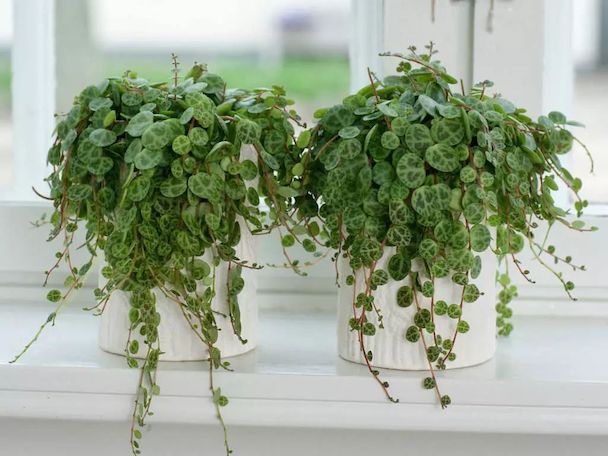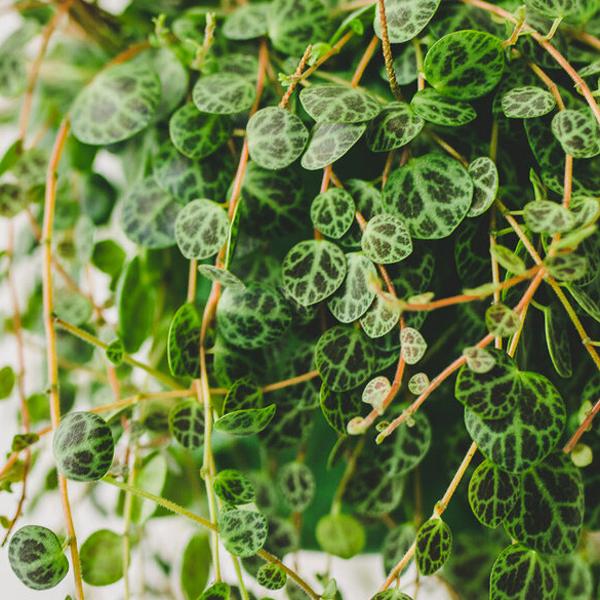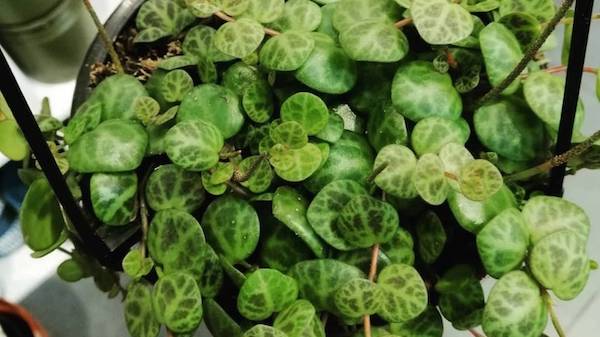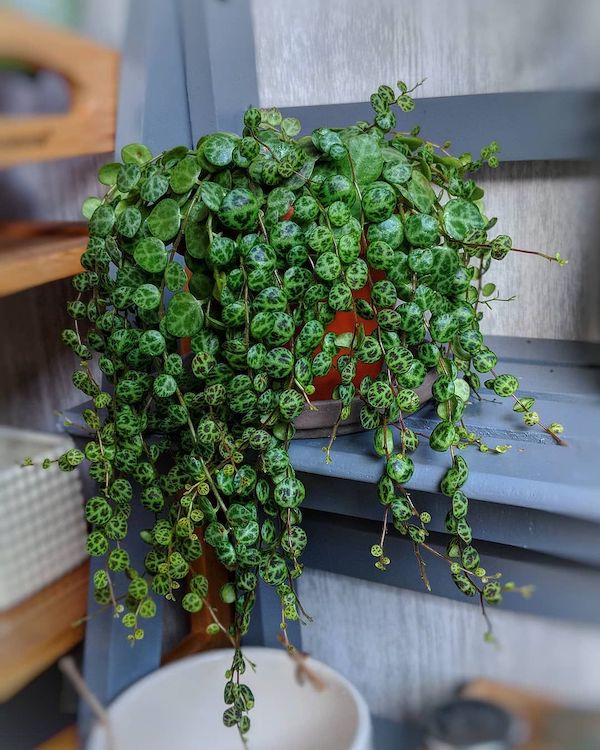String of Turtles Plant (Peperomia Prostrata) Care & Propagation Guide
Written by admin
Jan 18 2023

String of Turtles Plant, also called Peperomia Prostrata, is easy to care for. Known for leaves that resemble turtle shells, thus inspires the common name - String of Turtles, mostly because it prefers a bit of neglect and is somewhat forgiving. The String of Turtles Plant is a rare and easy-care houseplant, which is a great indoor plant for beginners.
 The following sections will provide an in-depth look into String of Turtles plants care, propagation and other common problems. For your convenience, this article also lists the key information of String of Turtles plants briefly in the chart form.
The following sections will provide an in-depth look into String of Turtles plants care, propagation and other common problems. For your convenience, this article also lists the key information of String of Turtles plants briefly in the chart form.

Many twigs grow inside the String of Turtles Plants, which are mostly weak and can be cut off one by one, so as to increase the permeability and light transmission of the Plant and greatly strengthen the ability of disease and insect resistance. After pruning can be disinfected to the wound, and put in a cool and ventilated place.
Read Next: How to Propagate String of Turtles Plant
Read Next:
How to Deal with String of Turtles Flower
String of Pearls Plant Care & Propagation
String of Rubies (Ruby Necklace Plant) Care & Propagation
String of Hearts Plant Care Guide
20 Popular Vine Plants Indoor To Grow
30+ Best Indoor Hanging Plants
11 Best String of Succulent Varieties as Hanging Plants
String of Turtles Plant Basic InfoString of Turtles Plant CareString of Turtles Soil CareString of Turtles LightString of Turtles Temperature CareString of Turtles WateringString of Turtles Fertilizer CareString of Turtles PruningString of Turtles RepottingString of Turtles Plant PropagationString of Turtles Plant ApplicationString of Turtles Plant FAQsCan String of Turtles Plant Grow in the bedroomIs String of Turtles Plant toxic
String of Turtles Plant Basic Info

| Scientific Name | Peperomia Prostrata |
| Common Name | String of Turtles, Magic Marmer, Radiator Plant |
| Synonyms | Peperomia rotundifolia, Jade Necklace. |
| Plant Type | Succulent |
| Native | Brazil |
| Mature Size | About 12 inches tall in 3 to 5 years |
| Growth Speed | Slow-Growers when young. But fast if in good conditions. |
| Light Care | Bright but indirect light |
| Watering Care | Moderate watering. Let it go dry between waterings. |
| Soil Care | Well-draining soil/mix |
| Temperature Care | 65-75ºF (18-24ºC) is ideal, but no lower than 50ºF (10ºC) |
| Fertilizer Care | Succulent fertilizer every 2 or 3 weeks |
| Humidity Care | High humidity (60-90%) |
| Pruning Care | Regularly cut off undesirable leaves |
| Repotting | Repot every 1 to 2 years |
| Propagation | Stem cutting or leaves cutting propagation |
| Toxicity | Non-toxic and pet-safe |
String of Turtles Plant Care
When caring for String of Turtles Plant, first you need to ensure that the soil is suitable, which must be well-draining soil/mix. In the daily care of string of turtles Plant, sufficient light should be guaranteed and suitable fertilizer water should be given to them to ensure the growth of String of Turtles Plant. In addition, the pot needs to be changed every 1 to 2 years to provide a better growth environment for String of Turtles plants.
String of Turtles Soil Care
For the care of string of turtles plant (Peperomia Prostrata), the soil needs to have good permeability and drainage, which can be mixed with leaf rot soil, river sand soil and pastoral soil. After completing the soil mixing, an appropriate amount of organic fertilizer should be added to the soil to ensure sufficient soil nutrients. Read on: Best Soil for String of Turtles PlantString of Turtles Light
String of Turtles Plant has a strong ability of shade tolerance, too strong direct sunlight is very adverse to the growth of the plants. It is better to put String of Turtles Plant in the half shade to care for, giving the plant with sufficient scattering light. Read on: How Much Light Does a String of Turtles Plant Require?String of Turtles Temperature Care
The most suitable growth temperature for String of Turtles Plant is around 25℃. In winter, the potted plants should be moved indoors for care. The temperature should be above 10℃, so that String of Turtles plant can survive safely through the winter. In winter, the temperature is low, and the water should be properly controlled to avoid the String of Turtles plant being frostbited in low temperature. String of Turtles Plant can continue to grow when the temperature is above 10℃. The lowest temperature for String of Turtles plant growing is 5℃. If the temperature is lower than 5℃, String of Turtles Plant will suffer from freezing damage. The plant grows slowly when the temperature is above 30℃ or below 15℃.String of Turtles Watering
String of Turtles Plant likes humidity, but the plants like a high humidity environment. We still have to keep the principle that thoroughly waters the plant and water again when it almost dry when we water the String of Turtles Plant. Usually, you can weigh the weight of the potting soil with your hands, and water it when it feels lighter. In hot weather, you can spray water to the leaves of String of Turtles Plant to humidify, but you should pay attention to the ventilation of the growing environment. Read on: How Much & How Often to Water String of Turtles PlantString of Turtles Fertilizer Care
String of Turtles Plant has a certain demand for nitrogen, phosphorus and potassium fertilizer. In the growth season of the String of Turtles plants, you can apply nitrogen, phosphorus and potassium fertilizer to the plants once every half month. At the end of autumn, phosphorus and potash fertilizer was applied to String of Turtles plants to improve the freezing resistance of String of Turtles plants. Fertilization was stopped in winter.String of Turtles Pruning
String of Turtles plants don't grow very fast, but they still have to be pruned regularly. When the plant grows to 10 cm, it is necessary to remove the top branches and leaves, so as to effectively control the growth and promote the healthy and lush growth of the side branches.Many twigs grow inside the String of Turtles Plants, which are mostly weak and can be cut off one by one, so as to increase the permeability and light transmission of the Plant and greatly strengthen the ability of disease and insect resistance. After pruning can be disinfected to the wound, and put in a cool and ventilated place.
String of Turtles Repotting
When caring for string of turtles Plant, under the premise of ensuring the suitability of the soil, the soil should be changed every 1 to 2 years. Find a lager new pot and place the new soil, so as to provide a better growth environment for String of Turtles Plant. Basin soil requires loose and breathable, rich in humus and good drainage. You can use rotten leaf soil or peat soil, decomposed horse dung or cow dung and a small amount of perlite or coarse sand, vermiculite mixed after preparation, and planted with a large and shallow pot to facilitate drainage. Read Next: How to Repot String of TurtlesString of Turtles Plant Propagation
String of Turtles plants (Peperomia Prostrata) are usually propagated by cuttings. String of Turtles Plant propagation is usually carried out in late spring and early summer. The strong branches with the top of 10 cm are cut, and 3~4 leaves are taken. After cuttings, it is kept moist and can take root about three weeks later. Blade cuttings can be cut robust and substantial leaves, and with a part of the petiole, after drying for a day, directly inserted or oblique inserted in the pot with coarse sand or vermiculite, the depth of about 1/2 to 1/3 of the petiole, inserted to keep slightly moist, also do not cover glass or plastic film, otherwise it will be perishable. Under the condition of 20℃ to 25℃, 2 to 3 weeks later, small adventitious buds and roots could be generated in the wound part. 5 to 6 weeks later, adventitious buds grow out of the soil surface and are dugout, which become a new String of Turtles Plant together with the old leaves.Read Next: How to Propagate String of Turtles Plant
String of Turtles Plant Application
String of Turtles Plant is a kind of small leafy plants that are very suitable for displaying and viewing, which helps to purify indoor air. Meanwhile, its dark green leaves can also relieve the eyes that have been reading for a long time.
String of Turtles Plant FAQs
Can String of Turtles Plant Grow in the bedroom
The leaves of String of Turtles Plant are relatively thick and have strong air purification effect, which can be preserved in the living room, study room or bedroom. The south-facing bedroom has sufficient light, where you can grow and care for string of turtles Plant. It can meet the light required for daily growth, and the plants can carry out photosynthesis, synthesize nutrients and release oxygen. However, it is not recommended to grow String og Turtles plant in north facing bedroom. Because the growth of the String of Turtles Plant requires sufficient light, the light in the north facing bedroom is weak. In order to survive normally, String of Turtles Plant will also breathe, which will consume oxygen in the room. Especially when the door is closed at night, the indoor environment is relatively closed. If multiple String of Turtles plants are placed in the north facing bedroom, The consumption of oxygen is relatively large, easy to make people dizzy. If you want to grow String of Turtles Plant in the north facing bedroom, you need to open the Windows frequently for ventilation.Is String of Turtles Plant toxic
String of Turtles Plant is not toxic. Some plants have an effect on human body because there are some alkaloids in their SAP, which will cause discomfort when touching skin or accidentally eating it, and may endanger life if it is serious. However, the Leaves and SAP of String of Turtles Plant are free of toxic substances and can be safely grown indoors. It also can absorb harmful substances in the air, to provide us with a healthier growth environment. If you have a newly renovated house, you can buy some String of Turtles Plant. Plus, keep it next to your desk to against radiation, relieve fatigue, and protect your eyes. (Read More: Are String Of Turtles Toxic To Cats)Read Next:
How to Deal with String of Turtles Flower
String of Pearls Plant Care & Propagation
String of Rubies (Ruby Necklace Plant) Care & Propagation
String of Hearts Plant Care Guide
20 Popular Vine Plants Indoor To Grow
30+ Best Indoor Hanging Plants
11 Best String of Succulent Varieties as Hanging Plants
Latest Updated
- Benefits of Bugleweed - 7 Science-backed Health Benefits
- Bugleweed Dangers & Side Effects - Is It Poisonous?
- How to Plant Evergreen Trees - What You Should Know
- When to Plant Evergreens - Grow Guide for Evergreen Trees
- 12 Wonderful Evergreen Shrubs for Your Garden
- 12 Popular Evergreen Plants with Pictures for Beginners
- When And How To Prune A Lilac Bush Like a Pro
- How to Grow & Care for Lilac Vine (Hardenbergia Violacea)
- Japanese Lilac Tree (Syringa Reticulata) Care & Propagation Guide
- Shumard Oak Pros and Cons - What to Know
Popular Articles
- Winter maintenance of Antirrhinum Majus
- How to Grow Terminalia Mantaly Tree
- How to Grow and Care for Crossostephium Chinense
- How to grow Antirrhinum Majus in spring
- Peristeria Elata (Dove Orchid) Profile: Info & Care Guide
- Underwatered Snake Plant (Sansevieria Trifasciata) - Signs And How To Fix
- How to Care for Brazilian Jasmine Plant (Mandevilla Sanderi)
- How to Grow & Care for Graptopetalum Purple Delight in Summer
- Rosa Chinensis (China Rose): Plant Growing & Care Tips
- How to Care for Baby Sun Rose (Aptenia Cordifolia)
